Ajahn Sucitto, Down to Earth
By John Harvey Negru
Buddhistdoor Global
| 2021-09-27 | 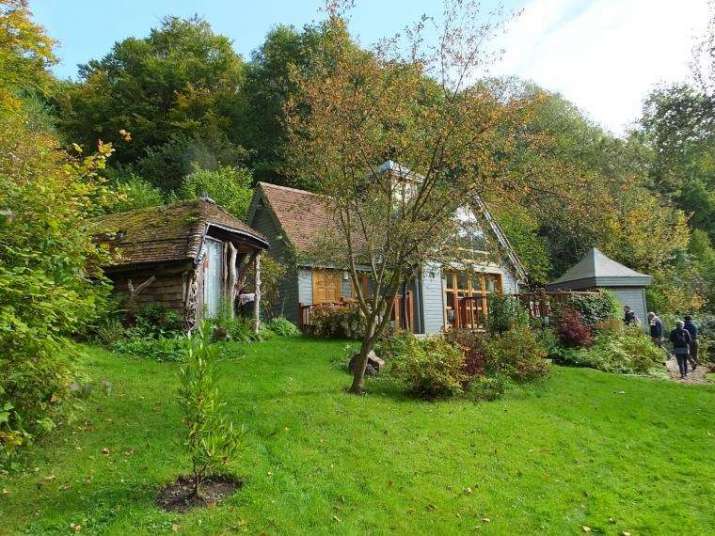 From westwightsangha.wordpress.com
From westwightsangha.wordpress.comOver the course of my Green Buddhist journey, I recently came across a 2020 article in Lion’s Roar by Ajahn Sucitto, titled “Waking Up in Dark Times.” My ears always perk up when I see a Buddhist leader speaking about our environmental crisis, so I wanted to know more about the ajahn, particularly when he said that his monastery in England had been gifted 60 hectares of woodland to look after in the 1970s. I wondered what achievements they have accomplished in nurturing it. So I wrote ajahn a letter.
I discovered that Ajahn Sucitto is one of a group of extremely prolific bhikkhu writers, whose Dhamma books are freely available in many languages and formats. One of those books, Buddha-Nature, Human Nature really struck a chord with me, and I mentioned that in the letter as well, asking if he would be willing to answer a few questions for this column.
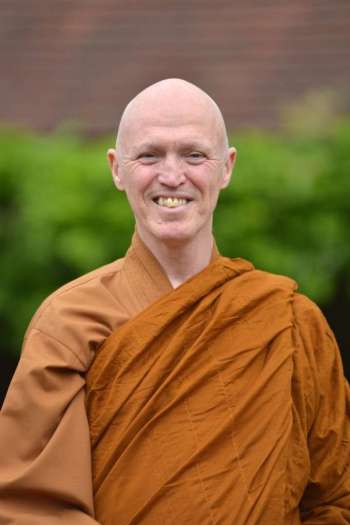 Ajahn Sucitto. From bswa.org
Ajahn Sucitto. From bswa.orgAjahn Sucitto quotes a lot of scientific and economic material to make his diagnosis of the sickness of our current relationship with the planet. That is very encouraging because it means taking a long, hard look at how we arrived here. It is rare for Buddhist leaders to be so well-versed in the ways of the modern world and to write about that!
The ajahn presents a “fourfold map of our environment, comprising our individual and collective material domain (our own bodies and the Earth on which we depend) and our individual and collective immaterial domain (our minds and the views, ideologies and religions that steer our collective mindsets).”* Here is that correspondence.
Buddhistdoor Global: First of all, Ajahn Sucitto, thank you for sharing your insights on our Anthropocene crisis from a Buddhist perspective. I read that your monastery, Cittaviveka, was given 60 hectares of woodland to manage back in the 1970s. How has that gone over the past 50 years? What were your guiding principles in your ecological management plan? What challenges did you face? What successes have you achieved? What are your plans for the future?
Ajahn Sucitto: We were given a piece of woodland that had been planted with non-native sweet chestnut trees for commercial purposes. The idea was to restore it to native woodland, and to enjoy it as a place for meditation and some forest-dwelling.
The plan was to bring that about and allow native wildlife to return, as the woodland was barely inhabited by native birds and mammals. The community had no specialist knowledge or experience, and the monks are forbidden from cutting down trees or damaging plants. We also had no funds and do not sell or charge for anything, so everything, including knowhow, had to come from free-will offerings.
Fortunately, among our supporters we had one or two who did have wildlife-management experience, and the idea naturally attracted some enthusiastic volunteers. Through various means we were able to acquire some government grants, and environmental groups were keen to work in the woodland for periods of time. The monastics themselves were also keen, as forest-dwelling is highly valued for meditation and renunciation practices.
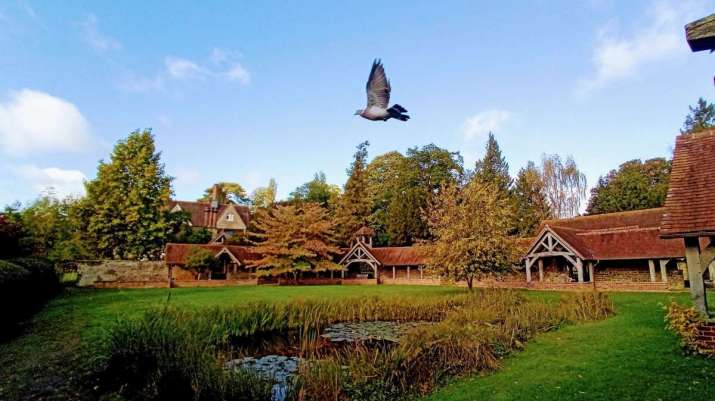 From cittaviveka.org
From cittaviveka.orgWe have reforested large areas of the woodland and also created some heathland—over 90 per cent of Britain’s heathland has disappeared since World War 2. We have also curated a medium-sized pond. Owing to these efforts, more than 60 species of birds are now found in the woods, and fish, waterfowl, and otters have returned. Our woodland is now a designatedsite of significant ecological interest and natural beauty.
Areas of the woodland have been left as chestnut coppice to provide fuel for the boiler that heats the main house. The ongoing challenge that we face is that the monastic community and its supportive trust organization do not have the financial resources to support a full management body to supervise the land. We make do with our own limited workforce, volunteer groups, and an occasional paid worker.
BDG: Have you any similarly environment-forward policies and practices in your monastery architecture, non-forested land use, and so on, that you’d like to mention, for example, carbon-free power, greywater recycling, organic farming, beekeeping?
AS: We heat the main building and water using our own wood. We purchase electricity from a non-fossil-fuel source. We draw drinking water from our own well. We have installed a large solar panel to top up our electricity supply. We have an electric car. Our new buildings have thick insulation to minimise heating requirements. We offer sites for local beekeepers to locate hives. We recycle what we can. We don’t give birth to children. We don’t use insecticides or herbicides. Many of us live in huts with no electricity or running water. Although we can’t control what people give us, our suggested donations list presents no animal products and encourages eco-friendly cleaning fluids and limited packaging. We have posters requesting people not to bring plastic bottles of water. We only travel for health reasons, or to teach, or for monastic gatherings.
BDG: What prompted you to write Buddha-Nature, Human Nature? It’s very unusual for a Buddhist book, in that you include a lot of scientific and economic context. Before you were a bhikkhu, was your lay life in one of these careers?
AS: I was at a teachers’ conference at Spirit Rock, California, in 2013, in which there was a presentation on climate change. We were asked to consider what we could do to support awareness of and action against climate catastrophe. I thought to include the topic in my Dhamma talks and to write a book on the matter. I had already written a small book on Buddhism and the environment in 1989 called Buddha-Nature, as a contribution to a faith and environment presentation at Canterbury—a follow-up to the Assisi gathering—so I thought to update that. As things turned out, the new book was completely new and 10 times bigger.
I had no experience in any of scientific or economic or environmental study or work, and I obtained all the material for the book from websites, articles, and a few readily available books. I was a literature graduate and had no career. Just odd jobs and travel: mind-broadening stuff.
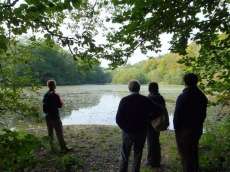 From westwightsangha.wordpress.com
From westwightsangha.wordpress.com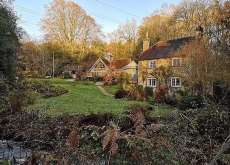 From cittaviveka.org
From cittaviveka.orgBDG: The book is also different from mainstream Buddhist books in that you write extensively about our collective consciousness and societal constructs. Most mainstream Dharma books focus on individual psychological reframing—a narrow view, in my opinion. What advice would you give engaged Buddhists who seek to bring that perspective to other Buddhists who are less focused on broader relationships?
AS: Everything we do and have done stems from the mind and the collective mindset. That has to change and there are well-practised and accessible traditions that specialize in doing that. As the problem is now systemic and baked into how our societies operate, it can’t be solved on an individual basis alone. The crux of the matter is that government is tethered to the forces of the global economy and is aimed at stability, at preserving and maybe tweaking the status quo. It can’t think or operate outside its deadening box. Only through a mass change at the grassroots level can government be shifted in the right direction. Monastic Buddhists are rightly at a distance from politics and worldly concerns; they nevertheless carry the profound responsibility to be the voice of ethical concern. The Buddha encouraged us to teach the way out of suffering “for the welfare of the many folk.” I see no greater or more pressing manifestation of ignorance and suffering in the world at this time than the destruction of a liveable environment.
BDG: Are there Buddhist centers in the UK from other lineages that you know have a similar environmental dynamic? Do you work together with them on any projects?
AS: Gaia House is a lay retreat centre that espouses environmental engagement. Most of our monasteries are engaged with reforesting and ecological concerns. We don’t work together with lay centres, but we do exist harmoniously and are on the same page with regard to environmental matters.
BDG: Beyond the suttas, is there a reading list you’d recommend to focus on our mindset of consumerism, extractionism, and endless economic growth? In other words, what inspired you to devote your energy to this type of practice? Here in North America, there are a handful of Green Buddhist “celebrities,” such as Bhikkhu Bodhi, David Loy, and Stephanie Kaza, and everyone else seems quite content to let them do all the heavy lifting. It’s quite discouraging. I guess my underlying question here is what will it take before Green Buddhist practice ceases to be an outlier and informs everything we seek to do?
AS: You probably know more than me on this topic. It can be the case that Buddhism is largely presented as an introspective and solitary practice. Personally, I am inspired because the large-scale destruction of life and habitat for all species is a matter of deep concern. However, I think the ball is in the secular court on this one; that’s where the power and the money lie. All the evidence is there crystal clear and starkly one-pointed. What is needed is not more books, but government and social action.
BDG: Do you work with any interfaith or secular organizations devoted to environmental issues? I know that the Alliance of Religions for Conservation recently closed after 23 years, and there seems to be a huge gap in interfaith cooperation on these issues and a lot of silo thinking impeding broad uptake.
AS: An interfaith environmental organisation has co-opted my book for their use in the UK.*
BDG: The COVID-19 pandemic, our current spate of wildfires and floods, sundry other issues such as extinctions and plastic pollution, and the IPCC Report that was recently published are all telling us that the world of the future is going to be very different from the world of the recent past and there is no returning to “normal.” How can Buddhists contribute to steering humanity toward a sustainable future based on interdependence, given the intractable nature of samsara? In other words, what will the Buddhism of the future look like?
AS: Buddhist practice focuses on change of consciousness, on ethical concern, on simplification of needs, on sharing of resources, on cultivation of inner plenitude, and on compassion. If the foundational practices of giving/sharing, morality/ethical concern, and renunciation/simplification were used as a global standard, there would be no problem. All of the resources of Buddhist practice and understanding will prove essential as the catastrophe continues to unfold. I have no strategic foresight, but I imagine that Buddhism will continue to encompass a hodgepodge of traditions, teachers, and cultures of differing degrees of relevance to contemporary problems. There are also different paths that offer waking up and these may also offer useful approaches.
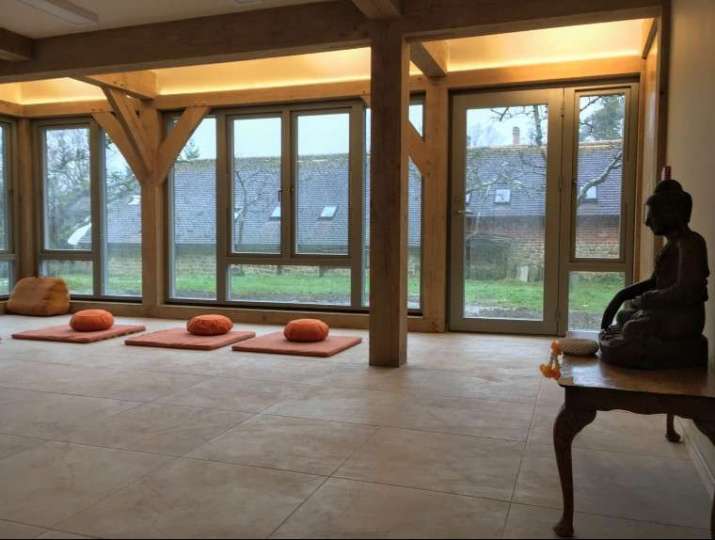 From cittaviveka.org
From cittaviveka.orgBDG: In North American Buddhist discourse, issues of identity and intersectionality—such as, racism, gender bias, and politics—tend to take up most of the oxygen in the room. While all important issues, they are within the human-to-human realm. What will it take to make the turning about in the mind bringing us into harmony with the non-human cosmos you describe in your book?
AS: We need to acknowledge that the human body is the platform for the heart-mind that we seek to purify or release. And that body and its intelligence is one outcrop of a creaturely, intelligent, interactive and interdependent cosmos. We are not observers or bystanders, we are participants—for good or for bad.
We need to respect all of life’s manifestations. In my opinion there are many pressing forms of suffering that are occurring today, and they are interrelated around the “domination-exploitation” view. That view, supporting inequality and divisiveness, is also supported by people being divided along fault lines of gender, nationhood, religion, and ethnicity. Addressing any of these issues is of benefit, and any attempts to bring people into harmony is skilful. However, while addressing social problems is valuable, there won’t be a society to address when the food, water, and shelter is in short supply due to environmental destruction. Even as these diminish, the likelihood is that there will be an increase in authoritarianism to control a protesting and stressed population, and—I imagine—conflict over resources. The scientific consensus is that at the current rate environmental damage is liable to become critical in the next 30–50 years and the trajectory toward that point is becoming increasingly fixed.
Regarding turning the mind around, the Buddha was right on the mark with that one: suffering. Currently drought is destroying farmland and floods are devastating cities; wildfires conflagrate millions of hectares; oceans are choked with plastic; and fish supplies are decreasing. As our accustomed lifestyle becomes impossible, the point presses home.
BDG: If you were to sum up your book’s message in a few key sentences, what would you say?
AS: The key hypothesis that the book presents is that our conditioned reality can be seen as comprising four interrelated modalities: the body, the mind, the material world, and the immaterial collective intelligences, human and other. There is a disease called domination-exploitation that affects all of these. There are practices that we can undertake that clear this disease and bring around our individual and corporate welfare on this planet, but this requires urgent, committed practice with whatever we participate in.
I’m not a prophet, but I pay attention. The crisis is happening now and if the trajectory of our civilisation doesn’t change course, we and most other living beings will suffer and many will die out. There are many good initiatives being taken—we can change course, but need to act promptly and globally.
* Faith Invest
See more
Cittaviveka - Chithurst Buddhist Monastery
Waking Up in Dark Times (Lion's Roar)
Related features from Buddhistdoor Global
Dharma’s Garden – Nourishing the Local Community through Homesteading
The Good Ancestor
The Price of Speaking Up
Visions of Spiritual Ecology: Diane Barker’s Photography of Tibetan Nomadic Life in China
Bhutan, the World’s Only Carbon-negative Nation, an Example of Environmental Stewardship for a Planet Grappling with Climate Change
Bringing Awareness Practice from Retreat into the World
More from Bodhisattva 4.0 by John Harvey Negru





















